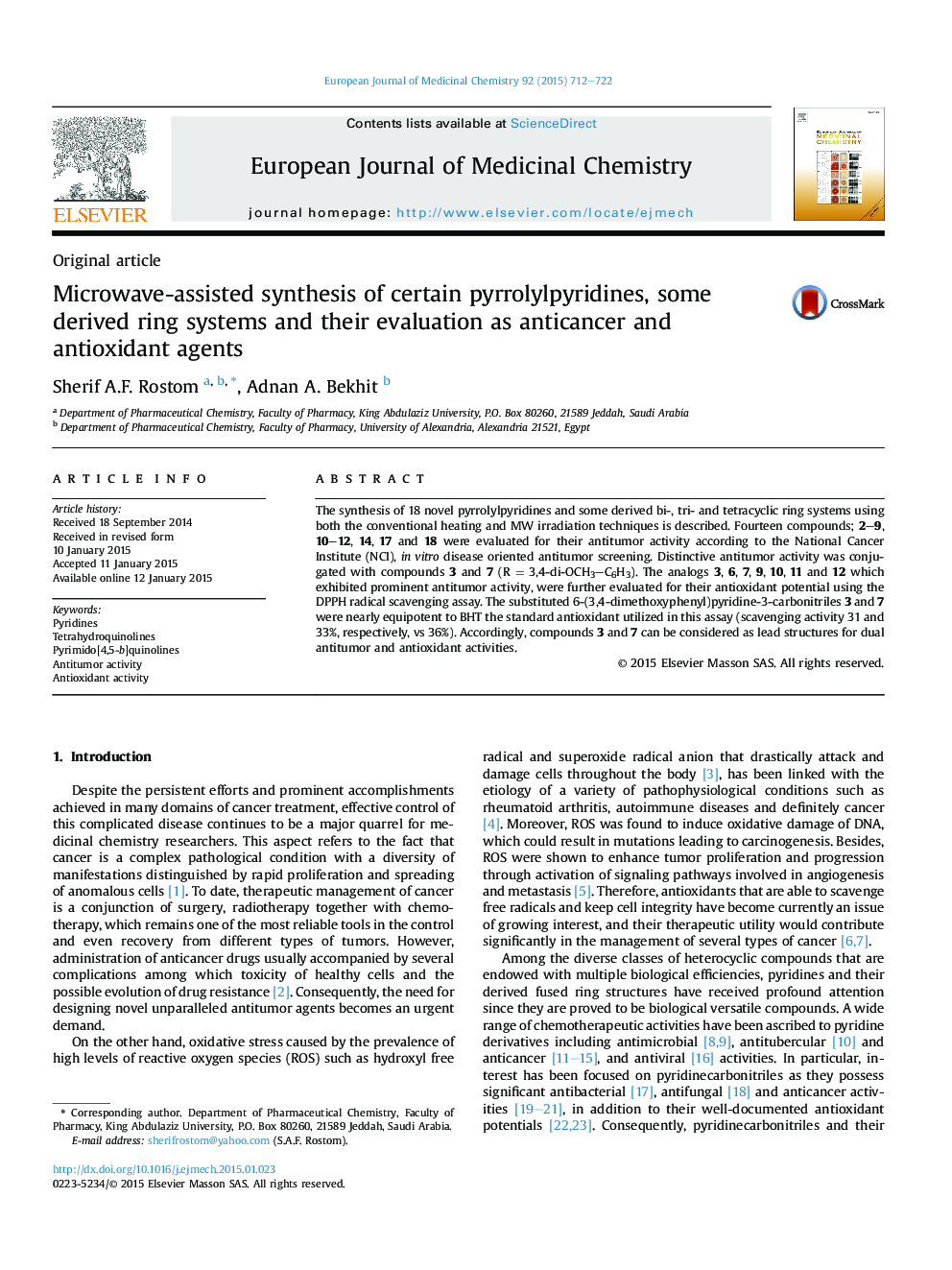| Article ID | Journal | Published Year | Pages | File Type |
|---|---|---|---|---|
| 1394025 | European Journal of Medicinal Chemistry | 2015 | 11 Pages |
•Synthesis of some new pyrrolylpyridines and some derived ring systems.•In vitro antitumor evaluation according to the NCI's protocol.•Fourteen compounds displayed broad spectrum of antitumor activity.•Seven analogs showed reliable antioxidant potential.•Compounds 3 and 7 can be considered as dual antitumor and antioxidant agents.
The synthesis of 18 novel pyrrolylpyridines and some derived bi-, tri- and tetracyclic ring systems using both the conventional heating and MW irradiation techniques is described. Fourteen compounds; 2–9, 10–12, 14, 17 and 18 were evaluated for their antitumor activity according to the National Cancer Institute (NCI), in vitro disease oriented antitumor screening. Distinctive antitumor activity was conjugated with compounds 3 and 7 (R = 3,4-di-OCH3–C6H3). The analogs 3, 6, 7, 9, 10, 11 and 12 which exhibited prominent antitumor activity, were further evaluated for their antioxidant potential using the DPPH radical scavenging assay. The substituted 6-(3,4-dimethoxyphenyl)pyridine-3-carbonitriles 3 and 7 were nearly equipotent to BHT the standard antioxidant utilized in this assay (scavenging activity 31 and 33%, respectively, vs 36%). Accordingly, compounds 3 and 7 can be considered as lead structures for dual antitumor and antioxidant activities.
Graphical abstractSeveral pyrrolylpyridines (A) and some derived fused rings (B–D) were synthesized using both conventional and MW heating techniques. Some pyridines, tetrahydroquinolines and tetrahydropyrimido[4,5-b]quinolines exhibited promising antitumor and antioxidant activities.Figure optionsDownload full-size imageDownload as PowerPoint slide
